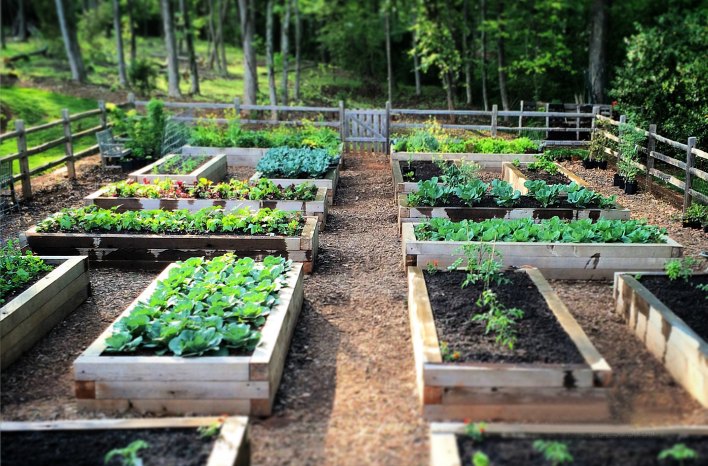Spring is here, and despite our cold snap last weekend, folks are busy getting gardens ready. Gardens can come in all shapes and sizes. Unfortunately, not every landscape is suitable for in-ground gardens. In these situations, raised bed gardens have become increasingly popular. Raised beds are improved areas of soil elevated above ground level and often surrounded and contained with boards or other rigid materials. Raised beds offer several advantages over in-ground planting.
One of the biggest advantages to raised bed gardening over in-ground is that raised beds allow you to control the quality of your soil; soil quality is the No. 1 consideration for successful gardening. The second major advantage of raised beds is that you can garden without getting down on your hands and knees to tend your garden. For older gardeners, this is a real benefit and can make gardening more fun. Another advantage with raised beds is that soil temperature in the beds can be slightly higher than with a normal garden. This means earlier planting. Other benefits of raised beds are that vegetables can be planted a bit closer together and thereby realize a better yield per square foot of garden space; and raised bed soil will not be as compacted as normal garden soil. Less compaction and foot traffic mean more fertile soil for better plant growth.

Raised beds can vary in size depending on the site, the materials used in their construction and gardeners’ preferences. Some raised bed frames are further elevated above the ground with blocks or bricks to make them more accessible to people who have difficulty bending or stooping. They are usually 2- to 4-ft. wide, 2- to 24-in. high and as long as desired. Avoid making beds wider than 3.5 to 4 feet, or it may be difficult to access the middle of the bed from either side. A raised bed frame can be made of wood, masonry or other building material. Whatever material is used, the structure needs to be strong and durable. You can imagine that a well-watered 18- to 24- inch-high column of soil carries a lot of weight, especially laterally. So, your “container” needs to be strong enough to support that soil weight. If you’re not too handy, there are raised bed kits available online and in some box stores. These kits can vary in quality and durability, so take care choosing a unit that will work for the long haul.
Here are some key considerations when planning your raised bed garden:
- Most vegetable crops require a minimum of 6 to 8 hours of direct sunlight to thrive and be productive-the more sunlight the better in most cases.
- Water is essential for raised garden beds, so consider this when selecting your location. Ideally, you should set up your raised beds where you can have access to your hose.
- Accessibility to your garden is key for weeding, pruning and harvesting. Consider this when planning and building your raised garden beds. Make sure that you can access all sides of the raised beds and that you are able to reach your plantings.
- Plant vegetables in blocks instead of rows while alternating crops that mature at different times. Planting the same crop at successive intervals during the growing season creates multiple harvests that are spaced over a longer period of time.
- Don’t allow taller varieties of vegetables to overshadow their neighbors. Plan to place taller varieties in the rear of the garden bed so that they do not block out the sunlight to shorter varieties.
- Consider adding vertical gardening techniques into your raised vegetable garden plans to maximize space and yields. Some plants, like cucumbers and some varieties of squash, need room to ‘run’ as they spread out and grow.
- Plan to allow vining varieties to spread over the edges of raised garden beds to capitalize on space.
For more information on raised beds or on gardening in general contact me at 706-795-2281 or clh@uga.edu. There are also a host of gardening publications at https://extension.uga.edu/.